The beauty of sheep is that they turn sunshine, via grass, into lambs. It’s as close to magic as I’ve ever witnessed. The catch, for people who raise sheep in high latitudes, is that there’s no grass growing in the winter. The age-old solution to this problem is hay, dried grass stored in a barn, but it comes with a number of complications, among them that lots of nutrition is lost in the drying, and you need a big barn. I was delighted to discover, in this age of dizzying innovation, that even hay is subject to updating. It turns out that if you cut grass and wrap it in a plastic bag while it’s still wet, it ferments, and it further turns out that sheep love the taste of pickled grass, which is much more nutritious than dry hay. And because of the plastic bag, you don’t need the big barn. My Finnish ex claimed that a Finn discovered this process, but it seems instead that it was a sauerkraut-loving German in the 19th century.
Like all things on the farm (I’m discovering), the just-so story of feeding sheep pickled hay, or baleage as the term of art would have it, is a bit more complicated in the doing. Here’s my stockpile of the stuff:
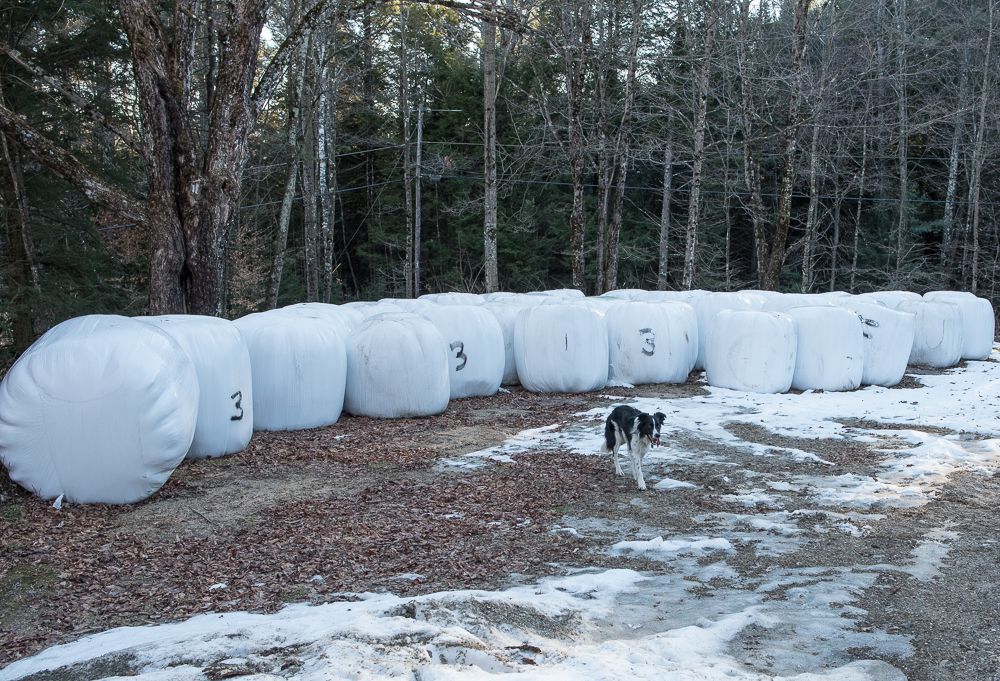
And here’s the thingy on the front of the tractor that allows me to move half-ton pickles:
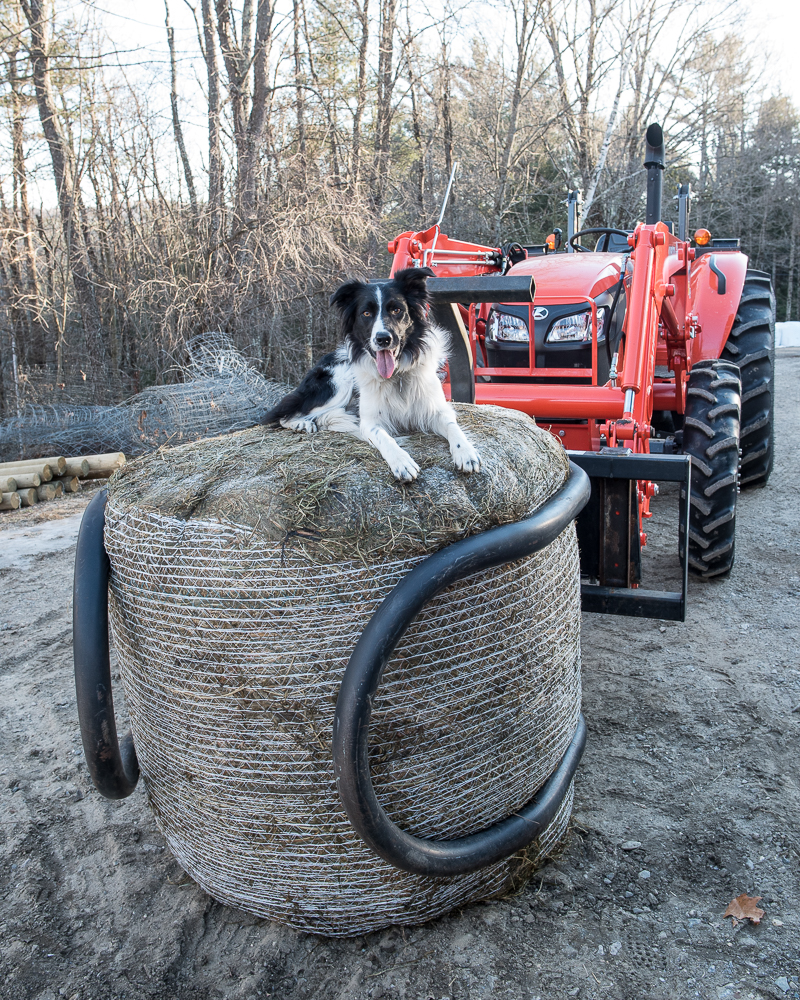
In theory, I should drive the tractor to where the sheep are hanging out, ask the border collie to hold them to one side, unwrap the bale, and install the feeding enclosure around it. Today the sheep were acting like they’d not eaten in weeks (in fact minutes), and Cass was not equal to the task of convincing them to give me some room.
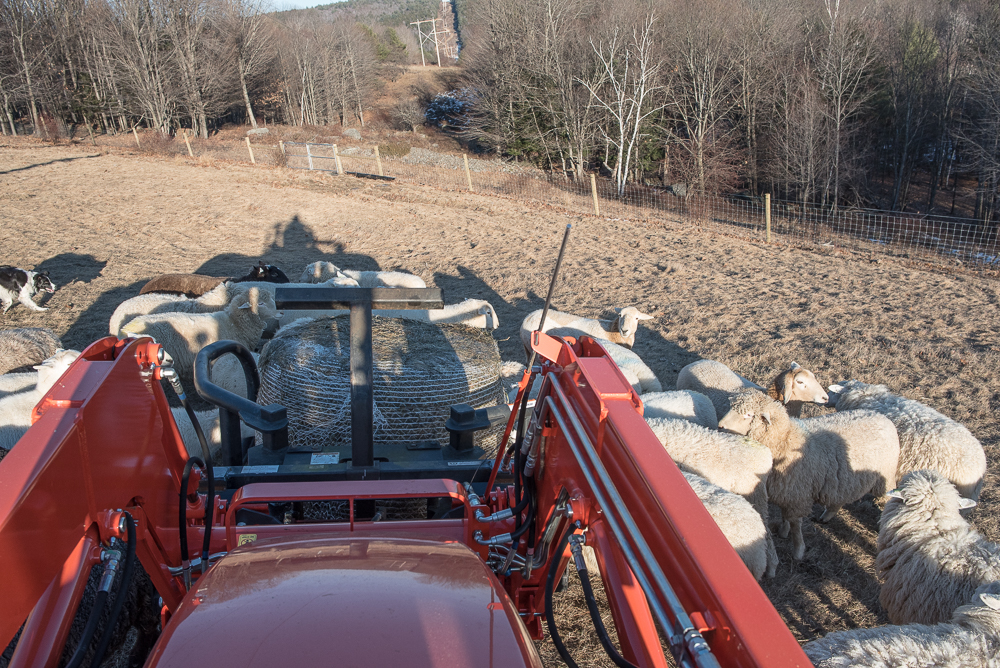
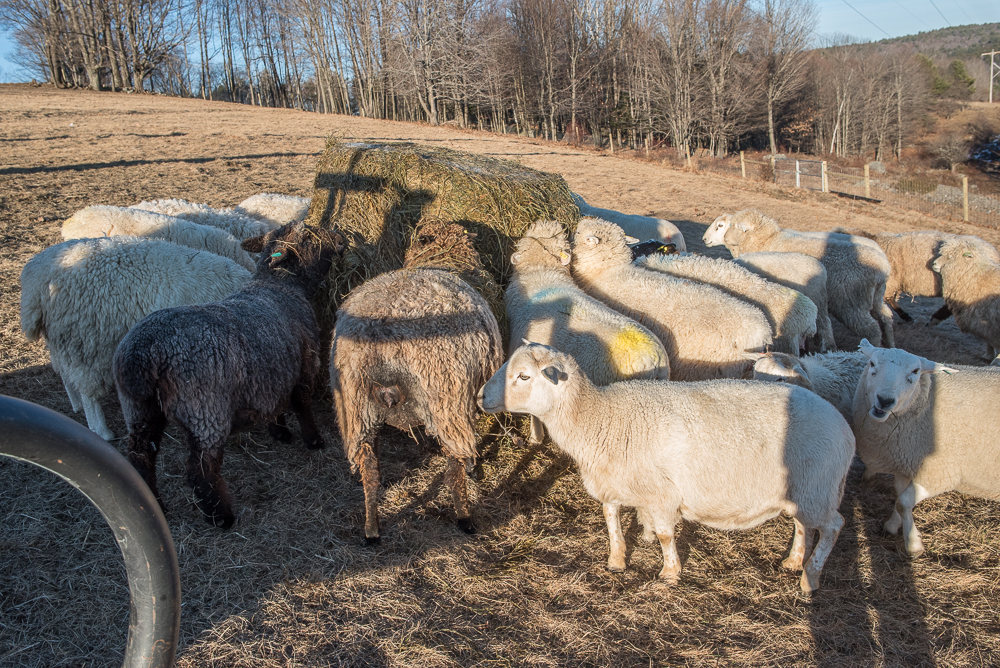
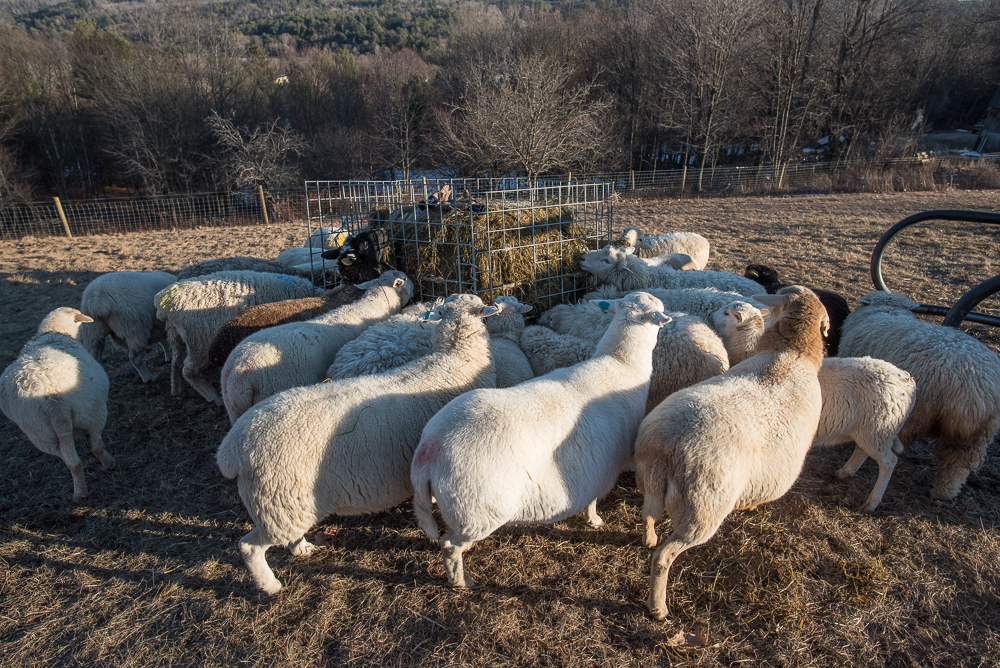 The sheep no longer feel shy around me, especially when I bring them tasty fermented grass, but with some pushing and shoving, I was able to get the feeder in place and the tractor out of the field, and I’m very grateful that sheep are vegetarians.
The sheep no longer feel shy around me, especially when I bring them tasty fermented grass, but with some pushing and shoving, I was able to get the feeder in place and the tractor out of the field, and I’m very grateful that sheep are vegetarians.
Tagged: baleage, border collie, Cass, feeder, Hollow Oak Farm, Kubota, round bale, sheep, tractor